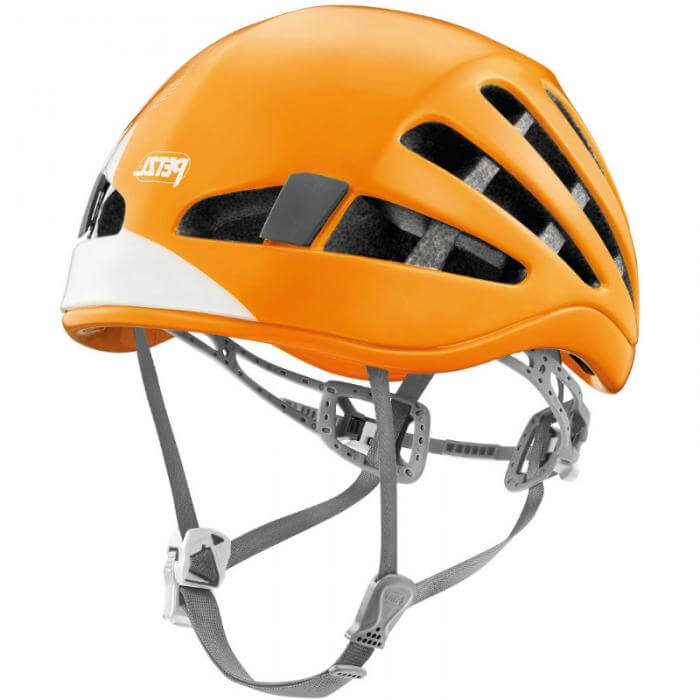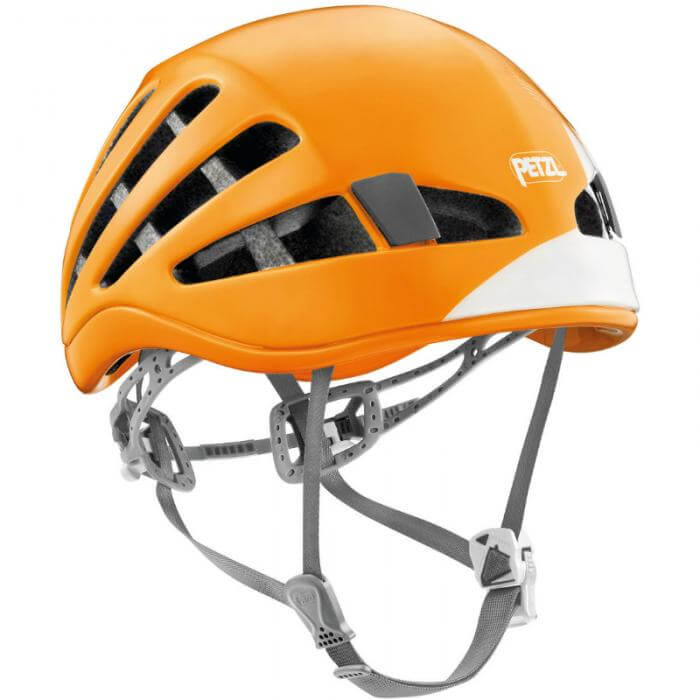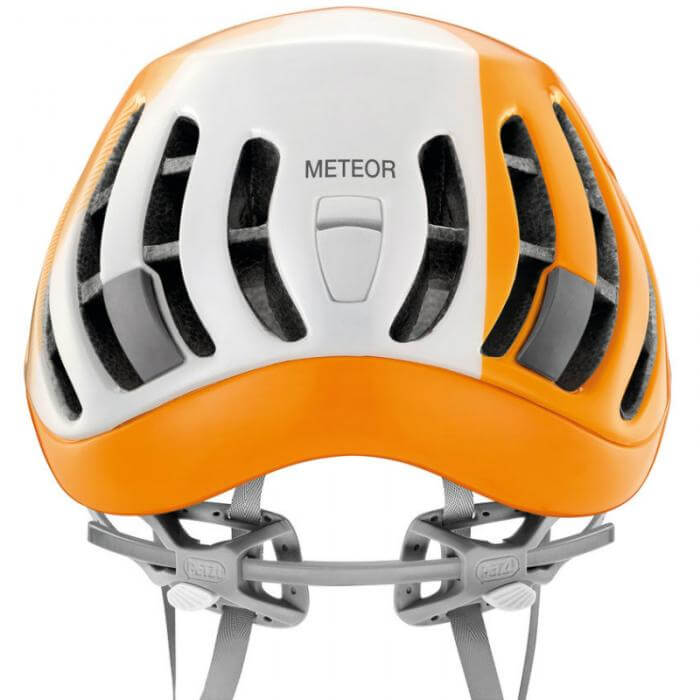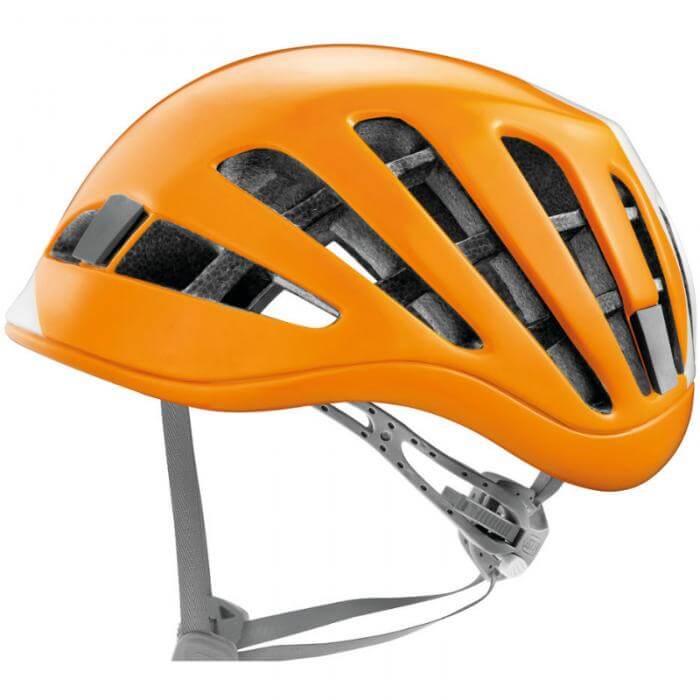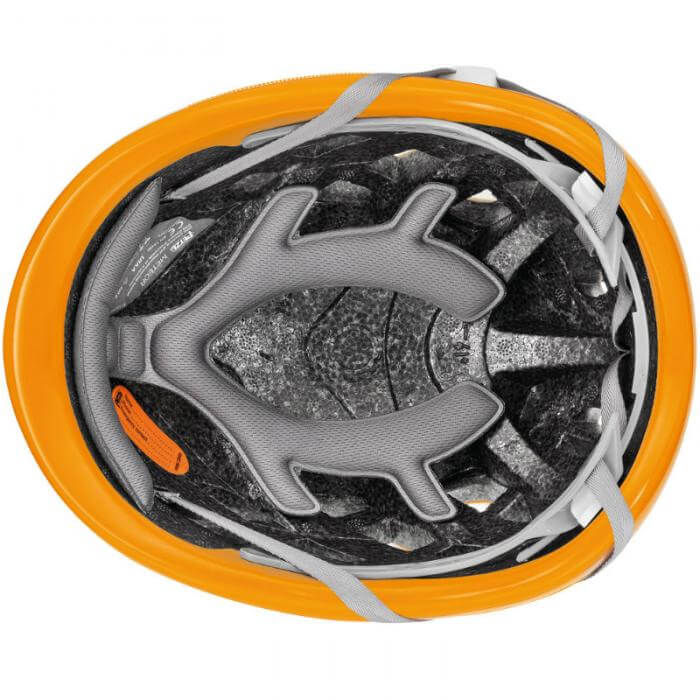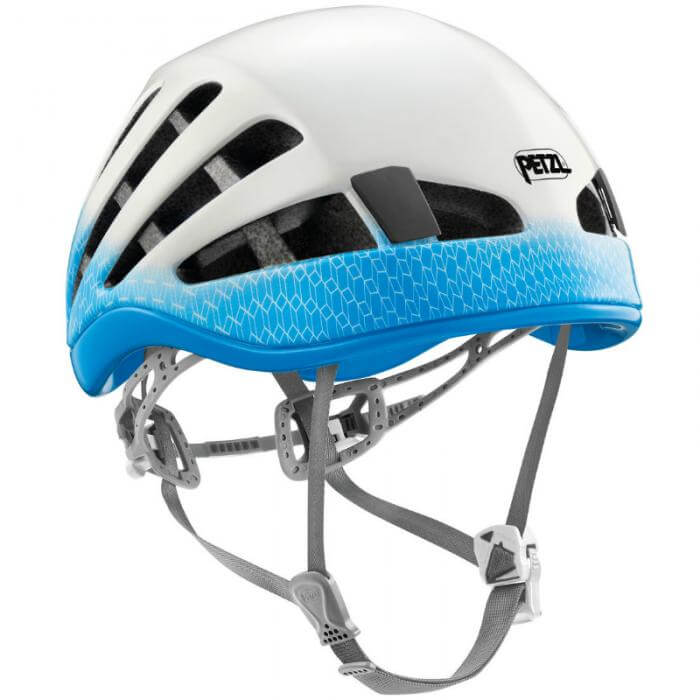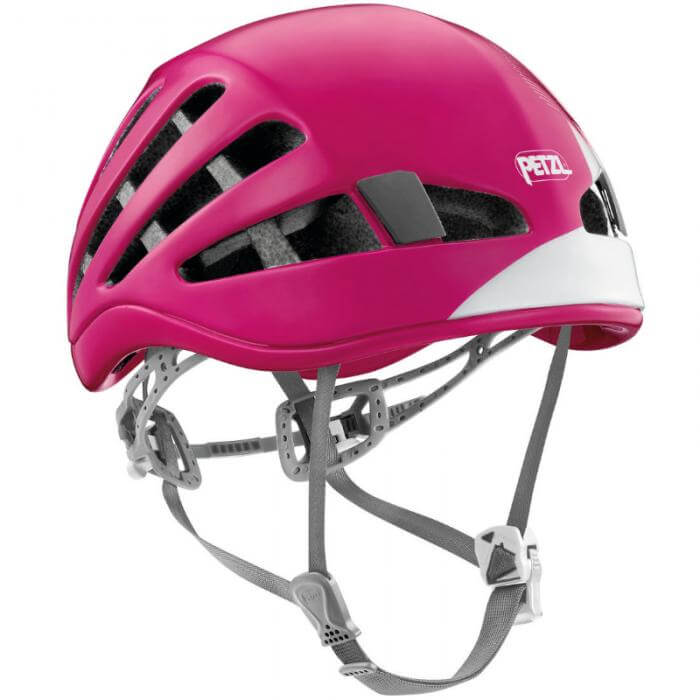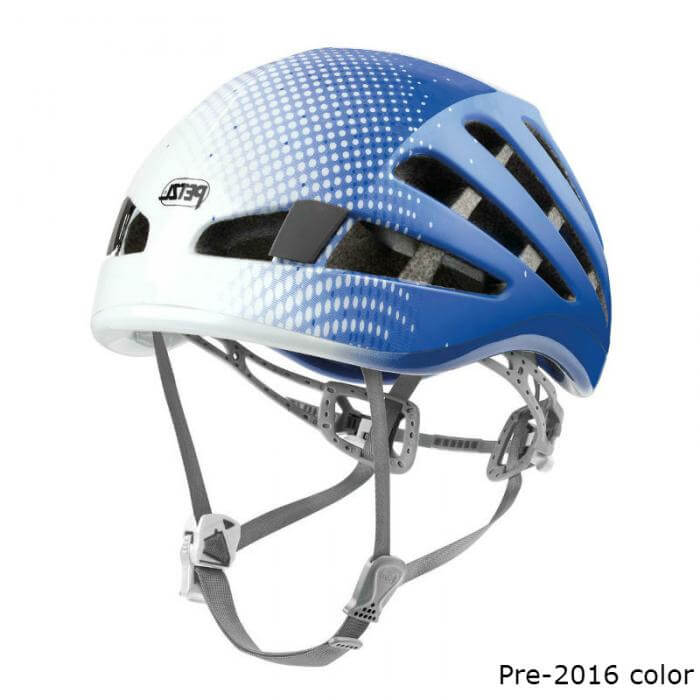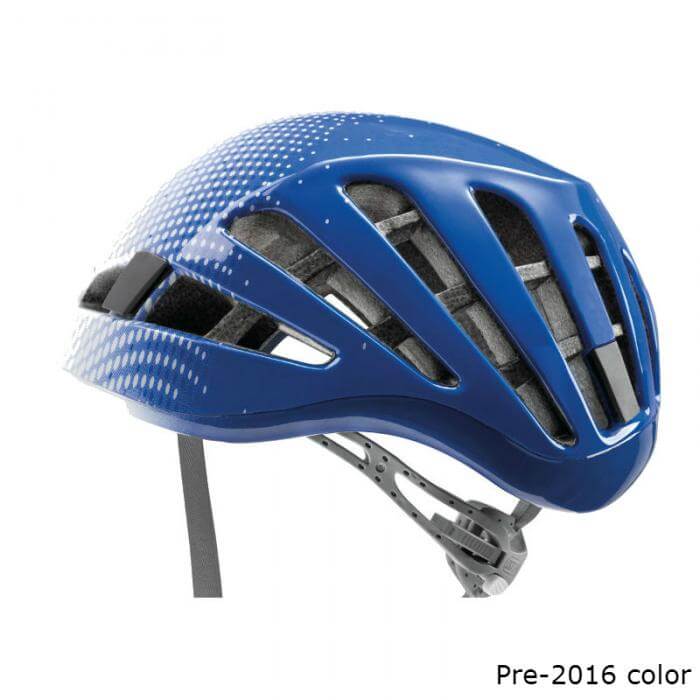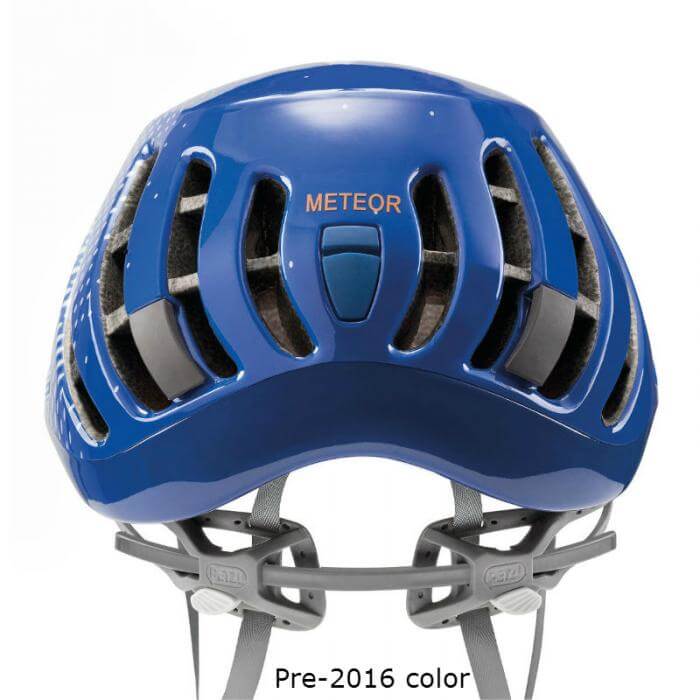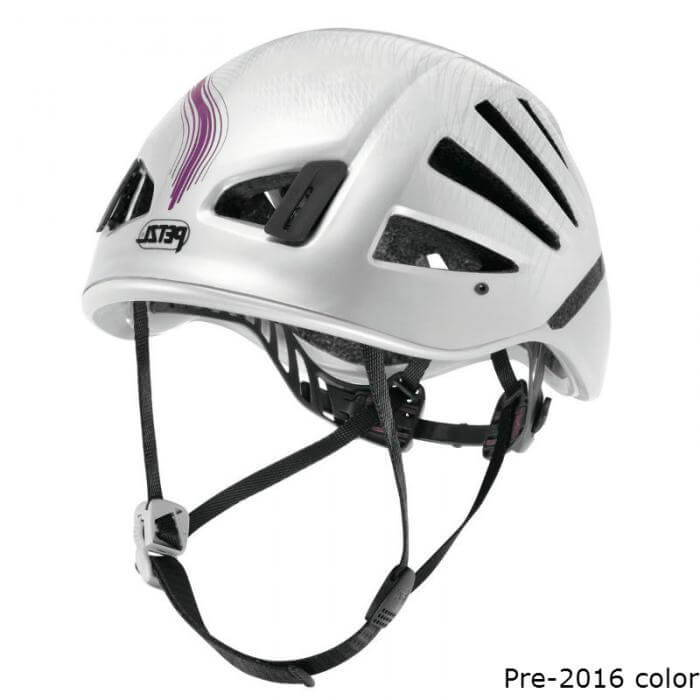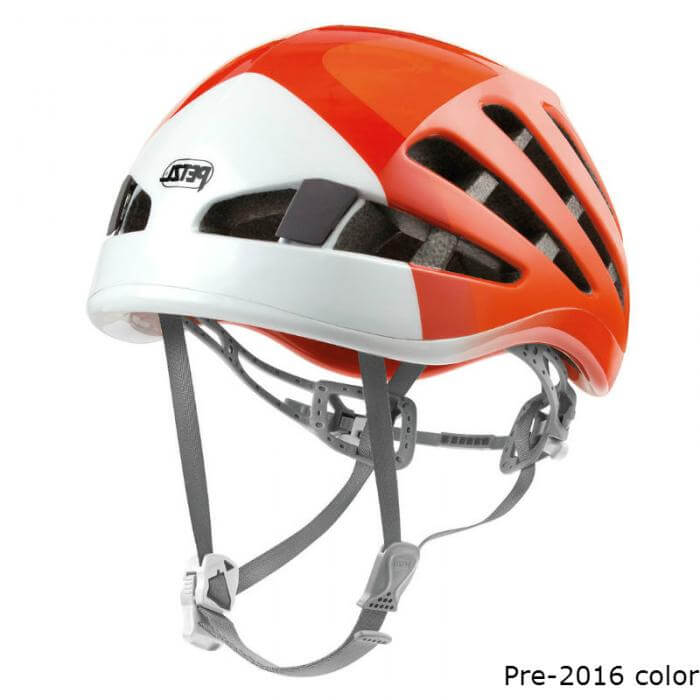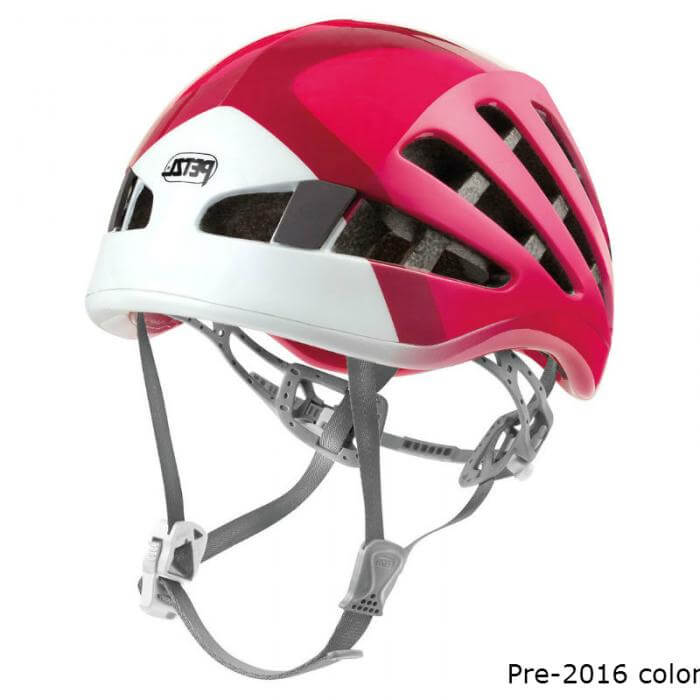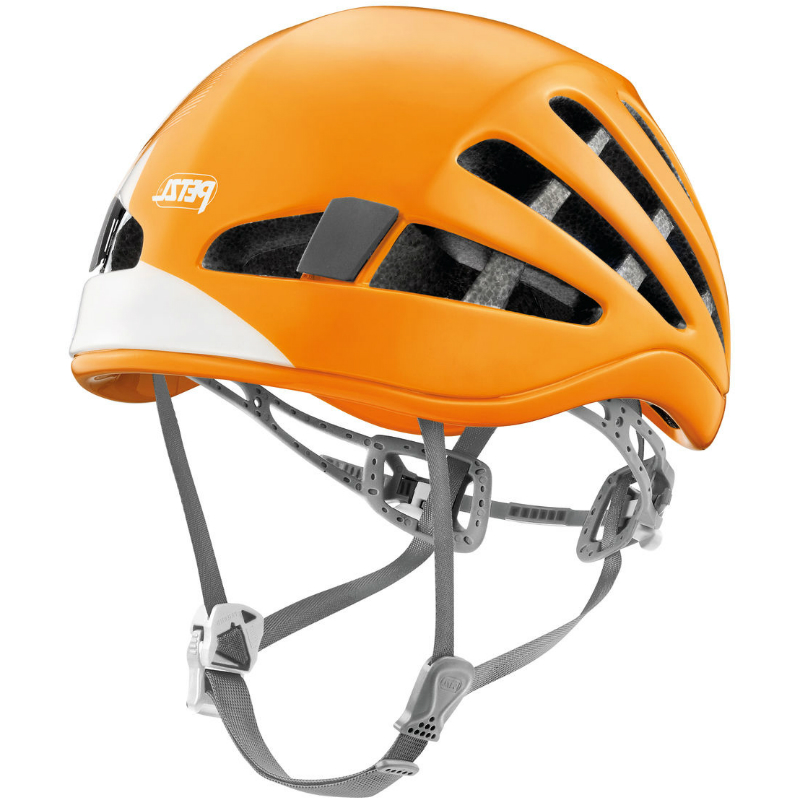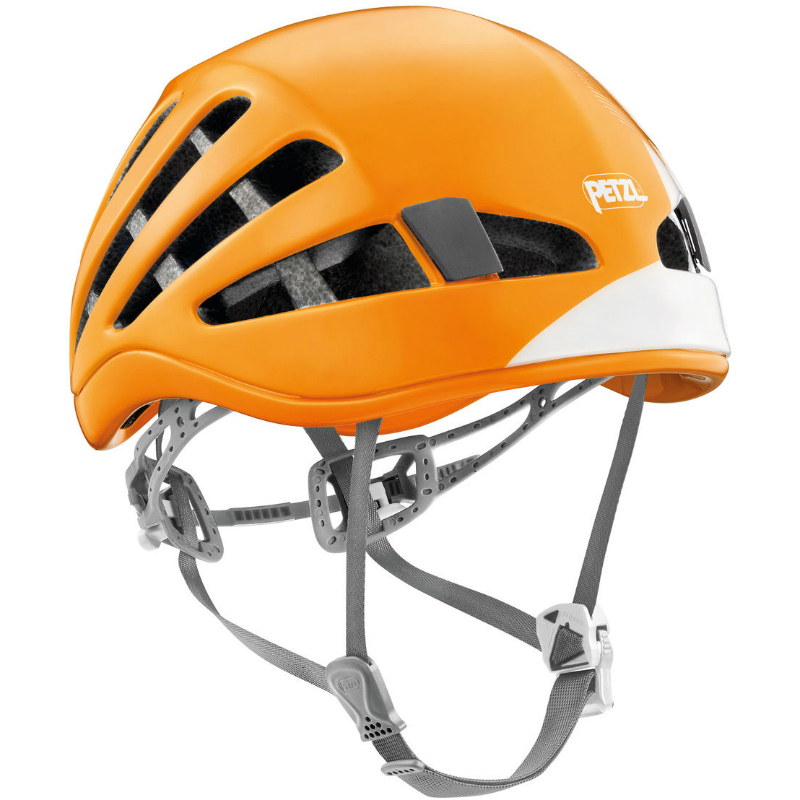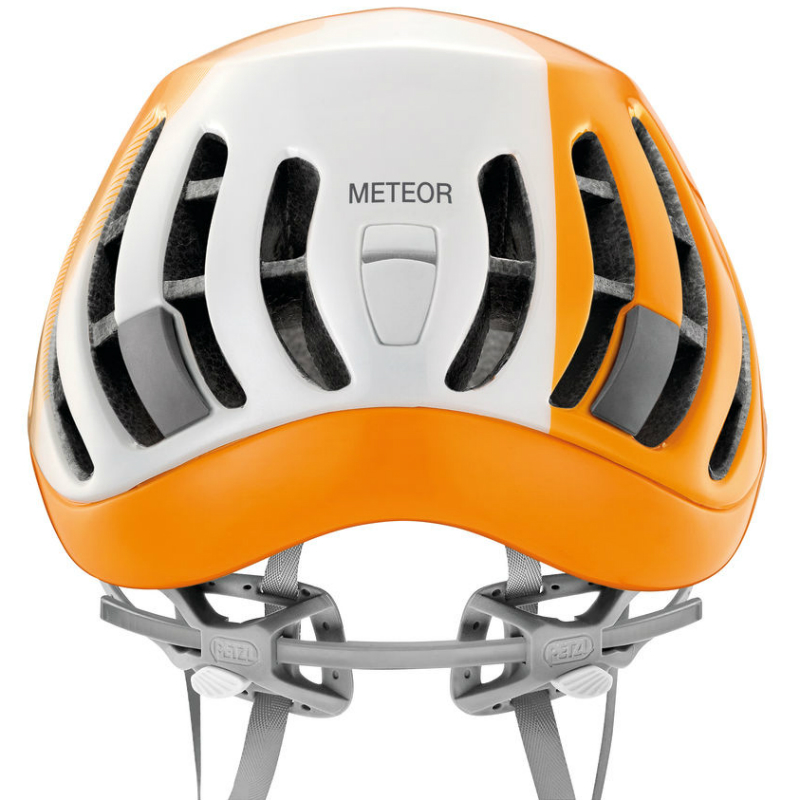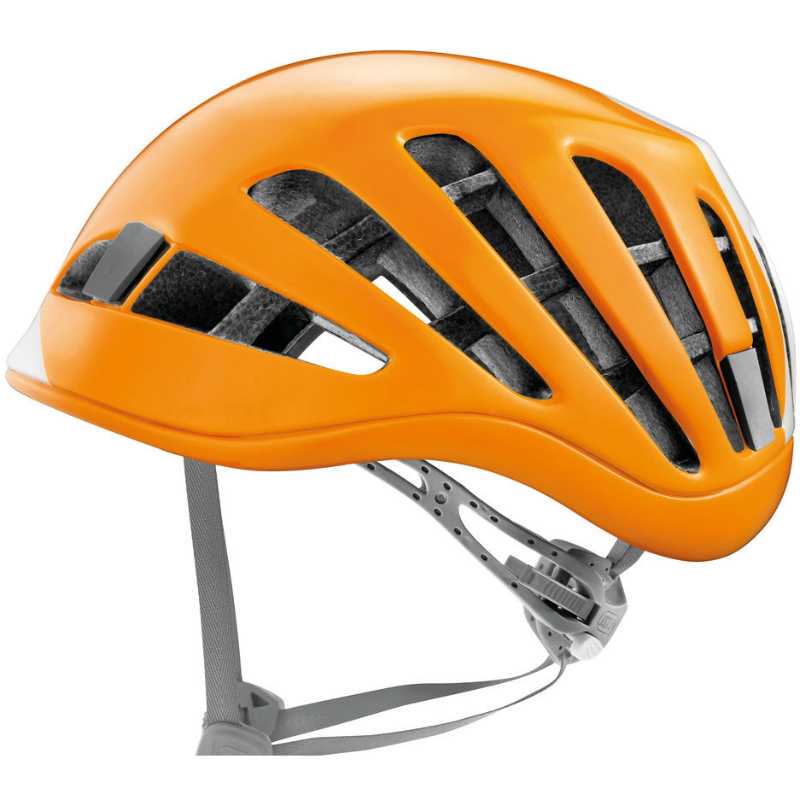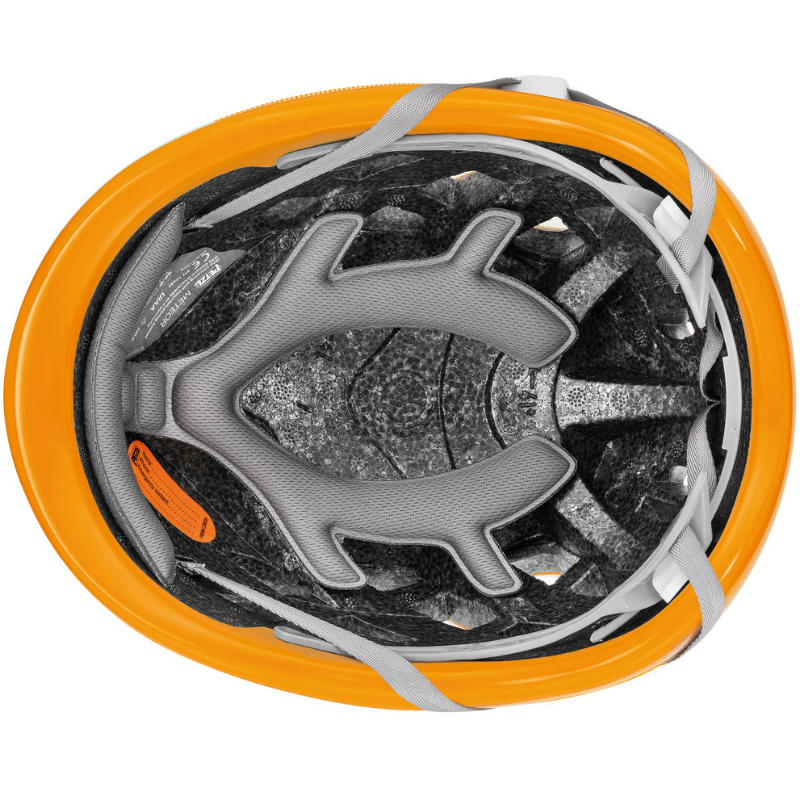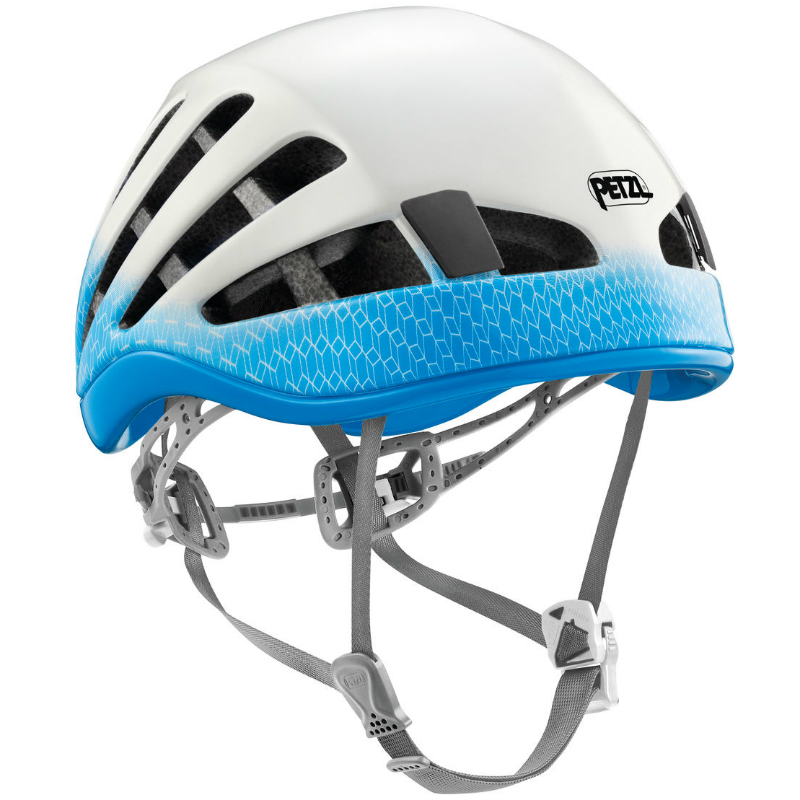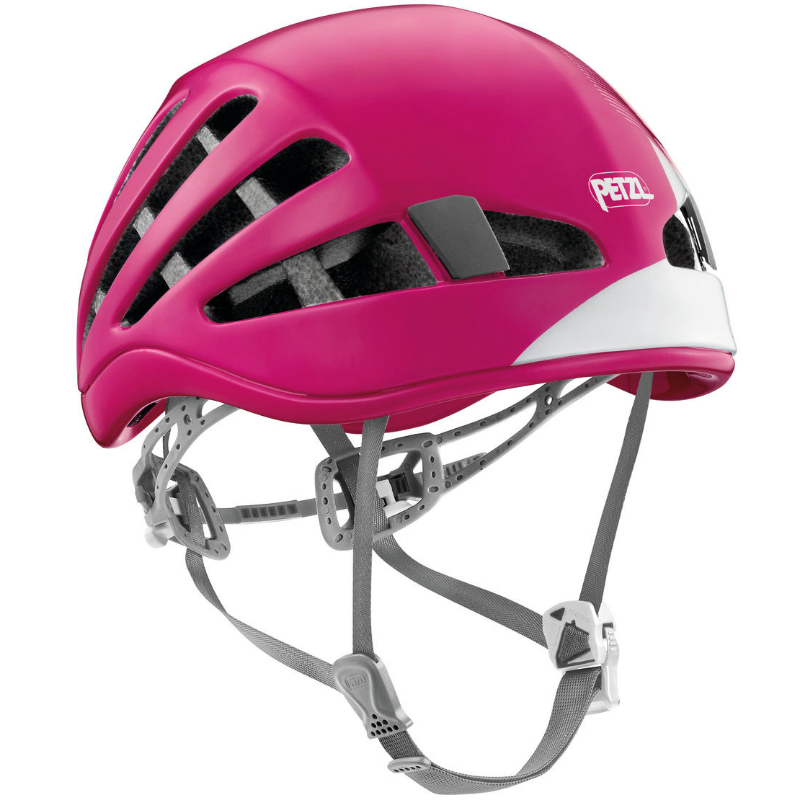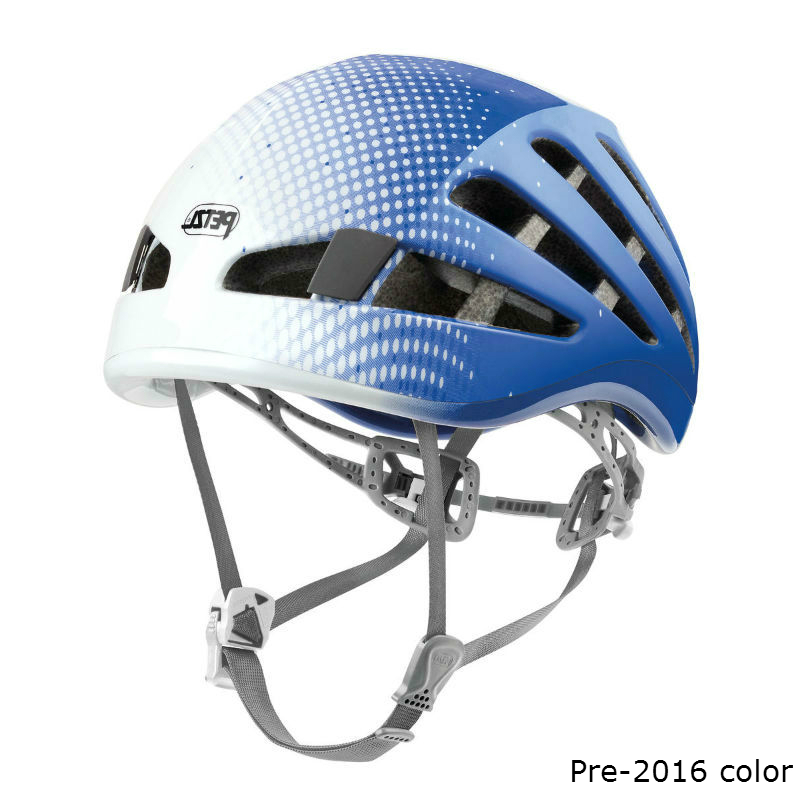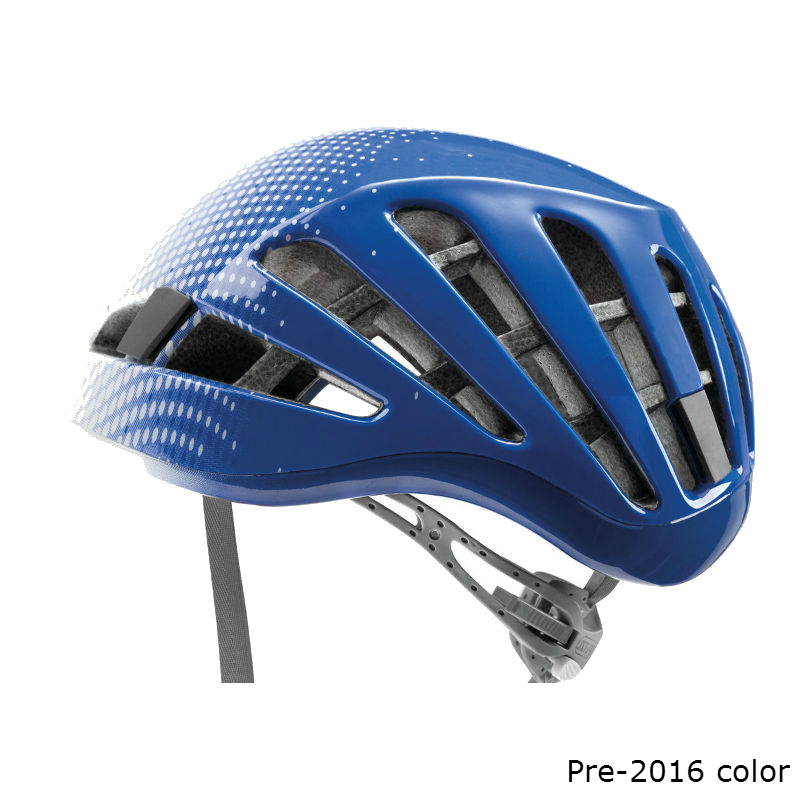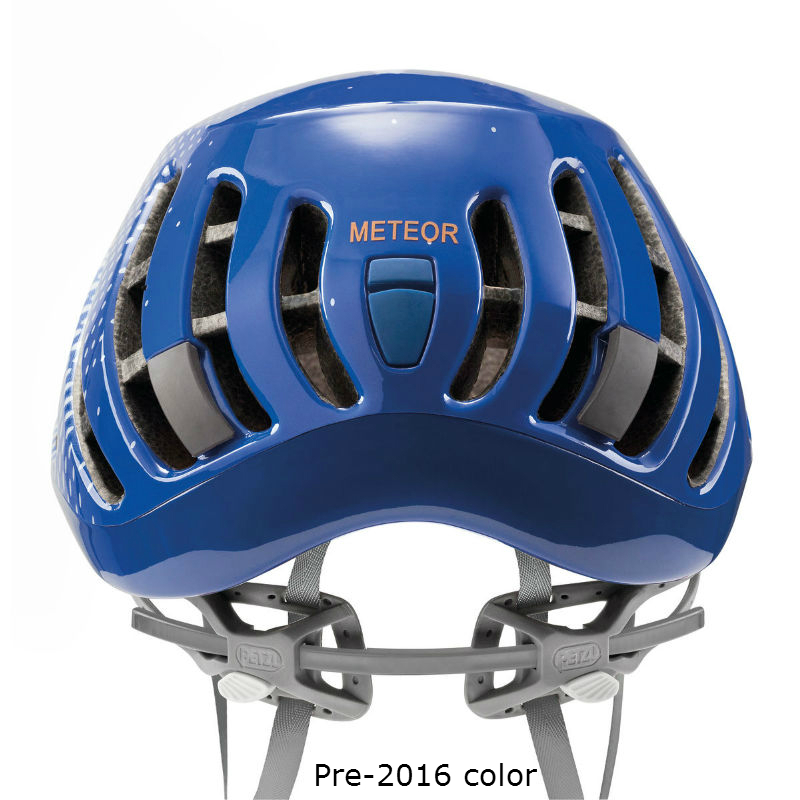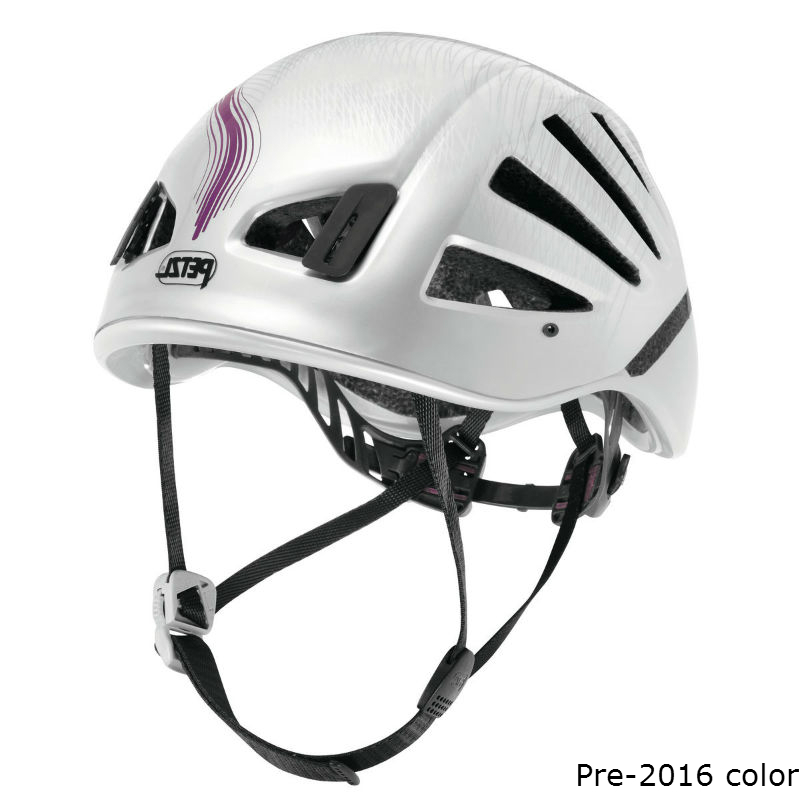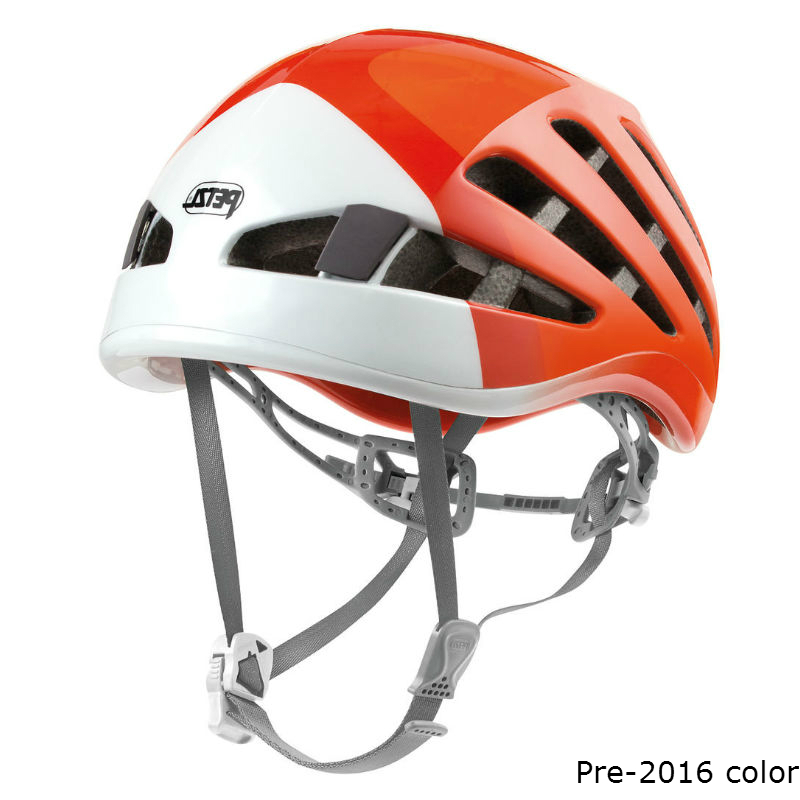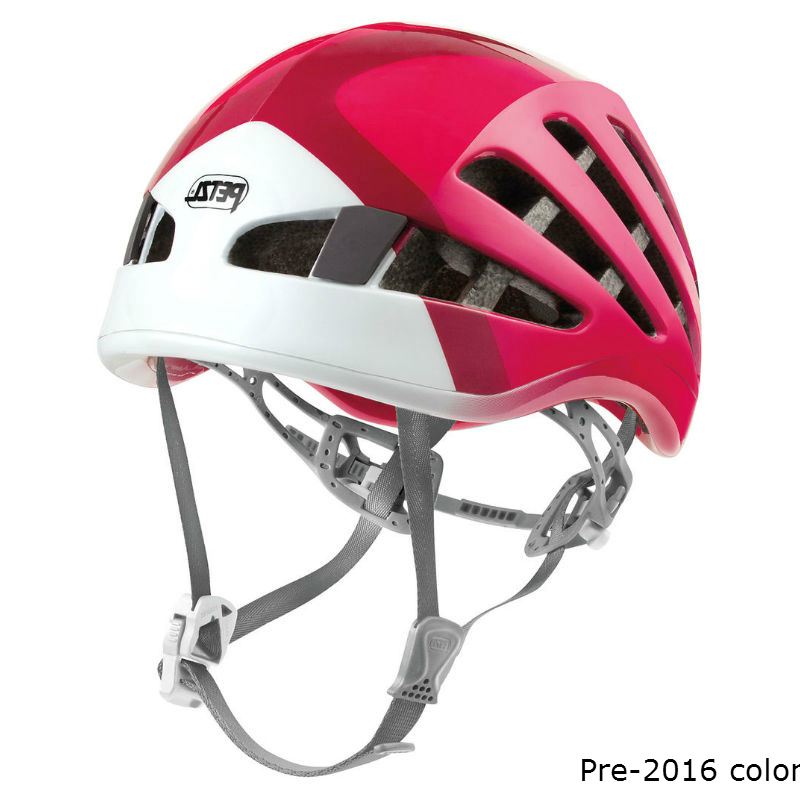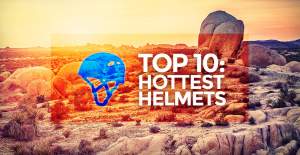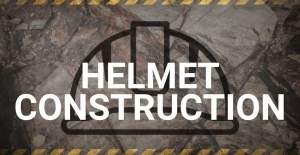Meteor 2018
Description
Lightness and comfort have made the METEOR helmet a signature product for climbing and mountaineering. This model has the advantage of large openings for excellent ventilation. Its innovative adjustment system allows each climber to adjust his/her helmet to head shape. The METEOR also comes with a new magnetic buckle which allows the chinstrap to be attached with one hand.
Comfortable to wear in all situations
- lightweight and comfortable on the head
- excellent ventilation
- soft headband conforms perfectly to the shape of the head
- magnetic buckle allows the chinstrap to be attached with one hand (Petzl patent)
- integrated chinstrap attachment points to reduce thickness
- comfortable, breathable foam lining is positioned to stabilize the helmet on the head
- chinstrap buckle and headband height are adjustable for a perfect fit
- headband folds into the shell for storage and transportation
Adapts easily to the activity:
- headlamp can be attached using the four integrated clips
- Compatible with the VIZION eye shield
Retail price
This Product is Hard to Find.
We don’t know where you can buy this item online in the US. We’ll continue to check all the major retailers and will update this page as soon as we find one.
If you know where to find this online in the US, let us know, and we’ll add the link.



Weight (g)  Weight (g)In grams, the weight, as stated by the manufacturer/brand. If there are differences in weight (due to multiple size or optional accessories) we note those here. | 220 g Size 1: 220 g / 7.8 oz |
Gender  GenderThis is the gender as stated by the manufacturer/brand. We use the term "Men" and "Unisex" interchangeably, as there is no difference between these types of helmets. |
Unisex |
Size Range  Size RangeThe sizing options of the helmet according to the manufacturer. | 19.00 in - 24.00 in Size 1: 48-56 cm / 19-22 in |
Features  FeaturesBike Cert (EN 1078)The EN certification for helmets used for bicycling and skating. The major difference in testing 1078 involves needs for more head coverage and for the helmet to pass a deflection or 'roll-off' test of the impact force. BrimHaving a brim on a helmet may be inconsequential to some climbers but they make a great additional bit of protection against sun, rain and falling debris like small rocks or verglass. Multiple SizesThis is helpful for those with particularly small or large heads because helmets that come in 2 or 3 sizes cover a broader range of head size. Usually these are denoted as size 1 or 2, though some brands have S/M and M/L. Face Shield CompatibleFace shields are a part of PPE that could be handy when drilling, developing and cleaning particularly dirty remote routes. Usually only used by work at height professionals. MIPS technologyMIPS or Multidirectional Impact Protection System is a technology designed to reduce the amount of impact force that makes it to the brain. This is accomplished by adding a low friction cap between the liner and the helmet, allowing the shell to deflect around the head rather than transfer the forces from impact directly to the wearer. Many bicycle helmets include this feature and it is starting to be applied to sports like skiing, motorcycling and climbing. Many MIPS helmets are also EN1078 compliant. Ponytail CutoutSo far these are only found in "women's" helmets. It's a cutout / notch area that accommodates a low hanging ponytail hairstyle. RECCO® reflectorThese are used in locating someone missing or buried in an avalanche and are becoming more common in climbing gear due to the increased popularity of ski mountaineering. Though they are more often sold as something to add onto the helmet than being built into one, some manufacturers have begun to build them in. Ski Cert (EN 1077)The EN certification for helmets used for climbing and skiing. This test is simpler than the EN/UIAA one performed for helmets in general, but increases the amount of force that a helmet must endure. Likely this to simulate the faster speeds involved with downhill skiing impacts versus rockfall or climber accidents. This cert becoming more common in helmets as SkiMo popularity increases and more climbers are adding backcountry skiing to their mountaineering repertoire. |
Multiple Sizes Face shield compat. |
Quick Adjust  Quick AdjustQuick Adjust refers to the straps of the helmet. Do you want the ability to ability to "quickly" adjust the fit. This could be a dial, or other plastic pieces. Really, most climbers don't need to change the fit of the helmet often, unless you're climbing with and without hats, or you have big hair that flattens and then requires tightening after climbing for awhile. |
Yes |
Vents  VentsRefers to openings in the helmet body to allow air flow. Commonly found in most helmets these days, but often more so in foam and hybrid foam helmets than traditional hardshell polycarbonate shells. Learn More
Click here to read more on helmet construction |
Yes |
Headlamp Compatable  Headlamp CompatibleMany helmets include hooks or clips for holding a standard headlamp in place, which is quite useful for the caver or alpinist. Ask any climber who has been benighted and they’ll tell you just how useful this feature can be. |
Yes |
Face Shield Compatable  Face Shield CompatibleFace shields are a part of PPE that could be handy when drilling, developing and cleaning particularly dirty remote routes. This feature isn't very common in climbing helmets and usually only used by work at height professionals. |
Yes |
| Certification | CE, EN, UIAA |
The Meteor is the best climbing helmet on the market, and wins our Editors' Choice Award for climbing helmets. This is our testers' favorite helmet for all types of climbing from mountaineering to sport climbing. This helmet took top scores in all of our tests and we awarded it a rare perfect 10 in comfort and ventilation.
We recommend the Meteor to any climber from beginner to pro no matter what discipline of climbing you do. We tell all our friends "Just get a Meteor, you won't regret it."
Light, cool and comfortable, the latest Petzl Meteor is robust enough for mountaineering and winter climbing as well as cragging, while the optional addition of face protection for ice climbing sets it apart from most of its competitors. If you are only going to buy one helmet for all your climbing then this would be an excellent choice.
In 1997, the Meteor was the first helmet on the market to use expanded polystyrene (EPS) as its primary means of absorbing impact. The big benefit for climbers? Comfort gains and weight savings—two key influencers for climbers wearing a helmet. It’s been through several evolutions since, and remains one of the best-performing and most popular lids out there. While the original version looked like a child’s bike helmet, the current version is sleek and easy to wear, with more than a dozen vents for breathability. It weighs only 7.8 ounces—not the lightest, but it’s close—and it has a nice array of features. “When a helmet is this comfortable and airy, there’s no reason not to always be wearing it.” It offers ample top, front, back, and side protection, and the sliding-ratchet harness system makes the Meteor super-simple to adjust for a variety of head shapes and sizes.
In conclusion, the Petzl Meteor is great update. I’ve been using the Meteor III+ for a while for both climbing and mountain biking and I feel the new one is worth the upgrade. It feels more compact, lighter to wear and supremely comfortable. The new, larger vents help keep my head cooler. The straps are easy to adjust and the magnetic clip is great. The overall, compact shape and the new colour scheme makes the helmet look cool too. The Petzl Meteor climbing helmet has always been and will remain an iconic piece of climbing equipment.
So, the new Meteor is definitely an improvement but many of the changes are fairly small or cosmetic tweaks. So, my conclusion would be that it probably isn't worth immediately paying out for a new one until you are due to replace it. Having said that, when you do swap you'll be very pleasantly surprised with the new model. Well done (again!) Petzl.

